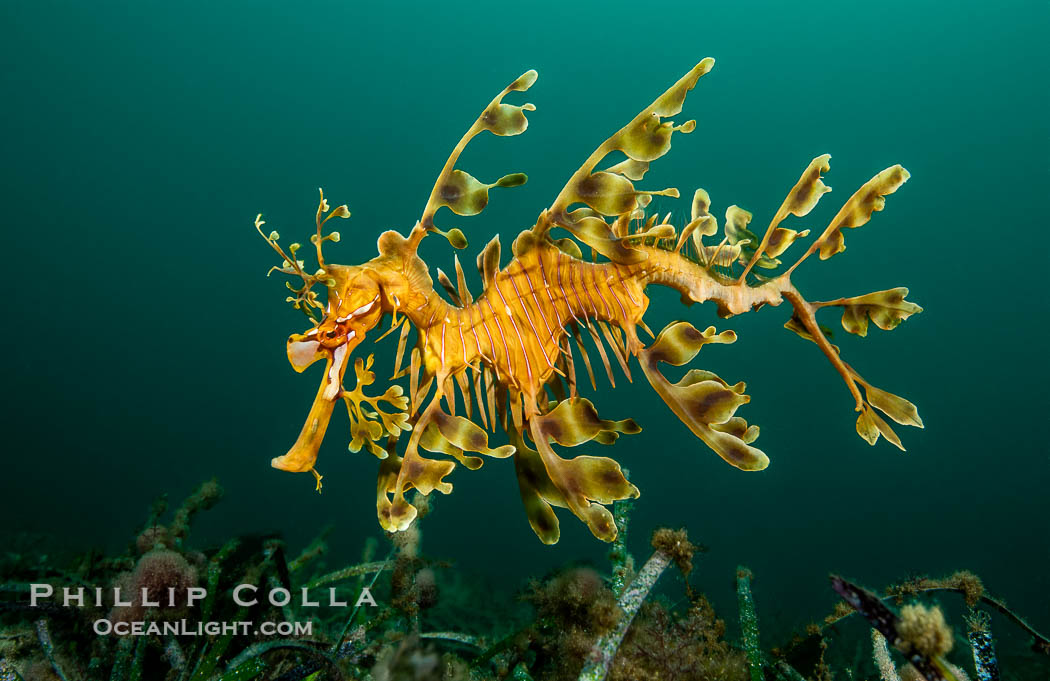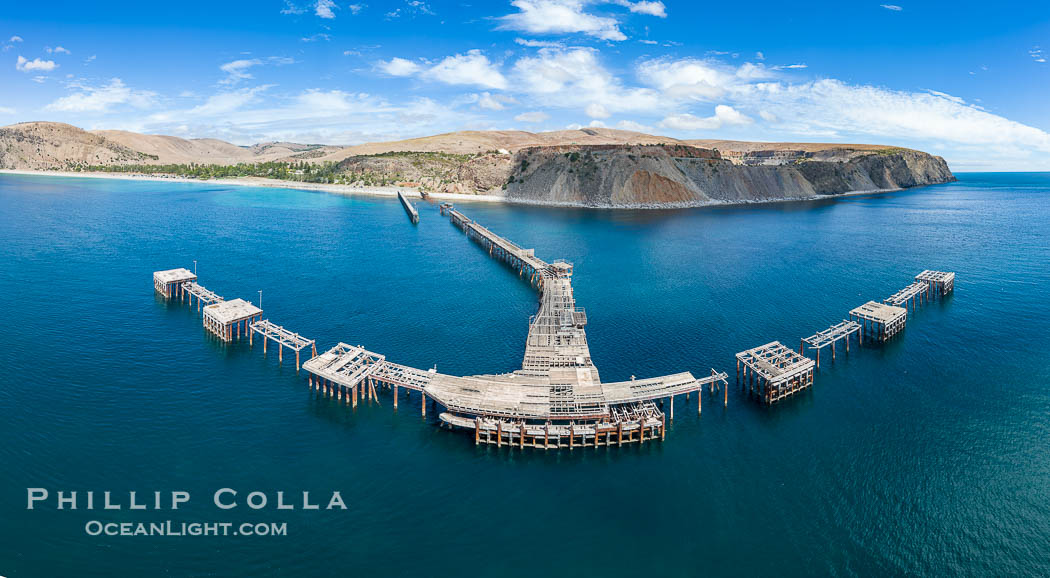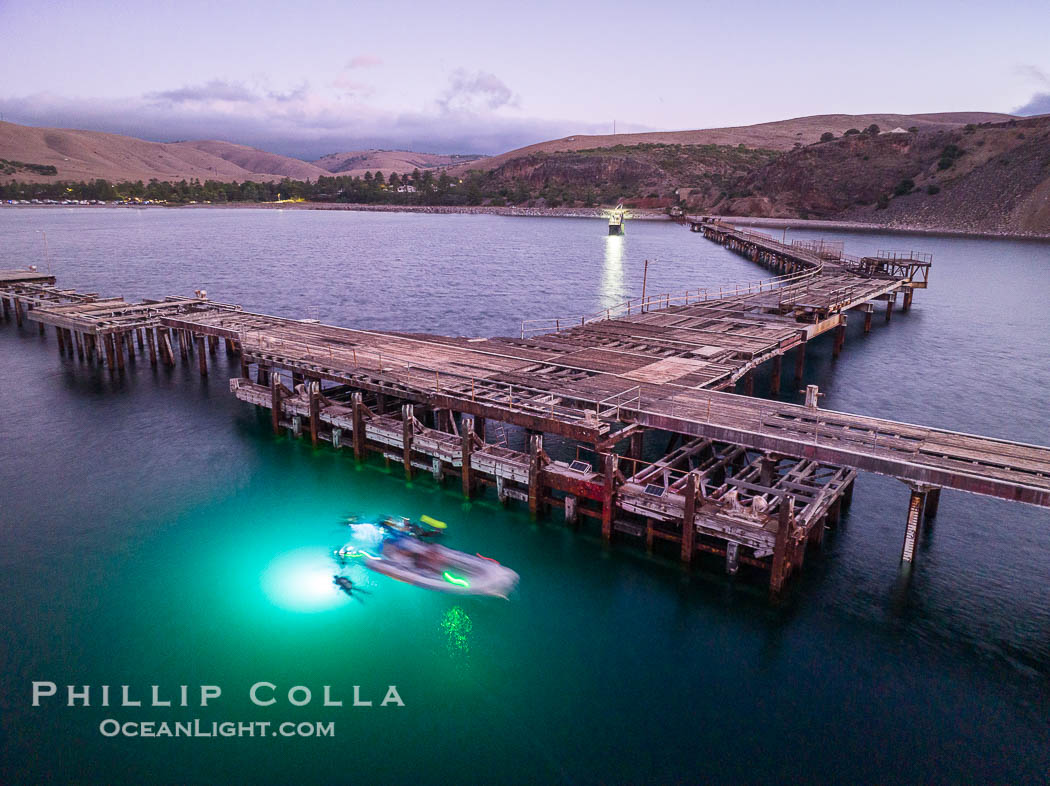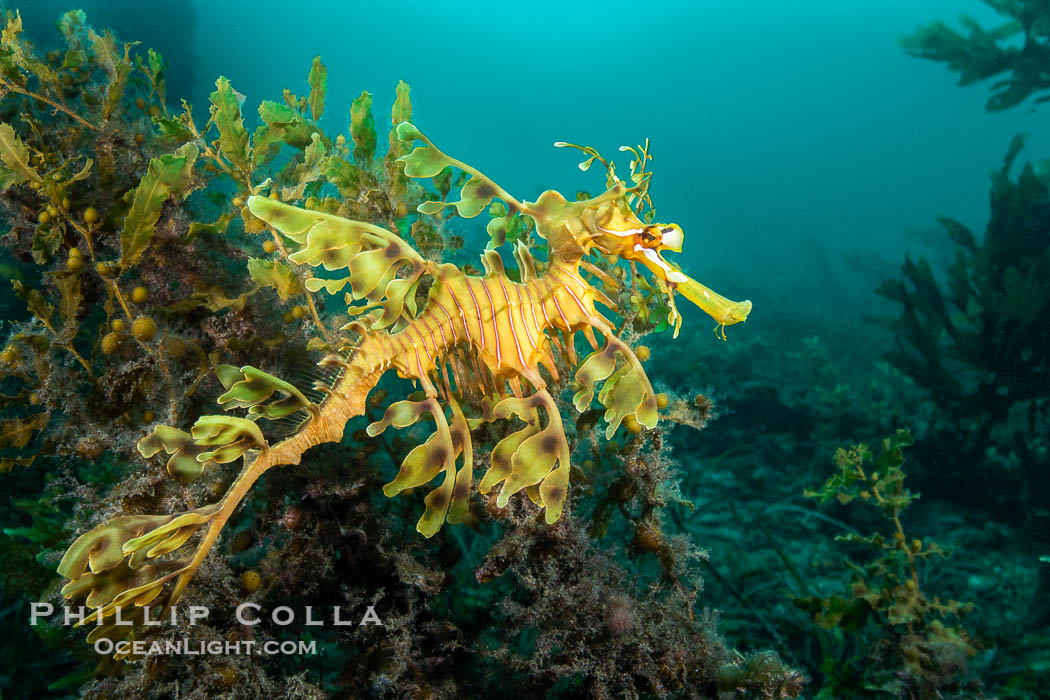While cruising around South Australia and Kangaroo Island, we stopped at a couple jetties. I think of a jetty as a breakwater formed of large bolders or rocks, but in Australia a jetty can be a wharf or pier. The jetties we visited are both famous for hosting a wide variety of sea life including the Leafy Sea Dragon (Phycodurus eques). I honestly had not given much thought to these creatures in planning for the trip, in fact I did not even bring a macro lens (life is too short to shoot macro). But after a few days on the boat it was clear that I was the lone exception: everyone else had leafy sea dragons high on their list of subjects to see firsthand. Merry and Phil even flew to Adelaide a few days early and made several leafy dives to ensure they succeeded in finding them. Our first jetty stop was to the Edithburgh Jetty on the west side of the St. Vincent Gulf. The conditions sucked: it was rainy, windy and the water visibility was about 2′. My back was giving me trouble so I didn’t dive at all that day, and the timing was lucky since everyone else said I didn’t miss anything. The captain had a feeling we would have better protection from the wind in Rapid Bay, on the southeastern side of the gulf, so we made an overnight crossing. And indeed the conditions were gorgeous. We had blue skies, warm air and pretty clean water for two days. Two of the M/V Rodney Fox crew even drove down from Adelaide to meet us. They had been diving the Rapid Bay Jetty a lot recently and knew where the leafy sea dragons were spending their time, so we had that advantage. Each day we made a couple long dives in about 30′-40′ of water. We did not have to make the swim from shore to the end of the jetty, instead getting shuttled in a zodiac from our very comfortable accommodations on the big boat to the end of the jetty. Super easy ride, then plop into the water and drop down amid the jetty pilings. The pilings are covered with life, so much that I could see spending several more days diving Rapid Bay simply for the other creatures inhabiting the pier. But for the two days I had, I decided to make finding leafy sea dragons on my own (no help from crew) a goal and pretty much ignored all the other creatures around me. I hovered over the bottom, barely moving, just staring at patches of kelp. The leafies were initially tough to find since they mimic the kelp so well. Eventually I got the hang of it. The idea is to find a blade of kelp the moves differently than the actual kelp, and there’s your sea dragon. Rapid Bay was a relaxing and enjoyable few days and I hope to get back there again sometime to check out all the other life on the jetty. Cheers, and thanks for looking!

The leafy seadragon (Phycodurus eques) is found on the southern and western coasts of Australia. Its extravagent appendages serve only for camoflage, since it has a nearly-invisible dorsal fin that propels it slowly through the water. The leafy sea dragon is the marine emblem of South Australia.
Image ID: 39137
Species: Leafy seadragon, Phycodurus eques
Location: Rapid Bay Jetty, South Australia

Rapid Bay Jetty Aerial Photo, South Australia. The now-derelict jetty (wharf, pier) at Rapid Bay is famous for great SCUBA diving, including opportunities to see leafy sea dragons.
Image ID: 39210
Location: Rapid Bay Jetty, South Australia

Rapid Bay Jetty Aerial Photo, South Australia. The now-derelict jetty (wharf, pier) at Rapid Bay is famous for great SCUBA diving, including opportunities to see leafy sea dragons.
Image ID: 39217
Location: Rapid Bay Jetty, South Australia

Rapid Bay Jetty Underwater Photo, South Australia.
Image ID: 39219
Location: Rapid Bay Jetty, South Australia

The leafy seadragon (Phycodurus eques) is found on the southern and western coasts of Australia. Its extravagent appendages serve only for camoflage, since it has a nearly-invisible dorsal fin that propels it slowly through the water. The leafy sea dragon is the marine emblem of South Australia.
Image ID: 39357
Species: Leafy seadragon, Phycodurus eques
Location: Rapid Bay Jetty, South Australia



